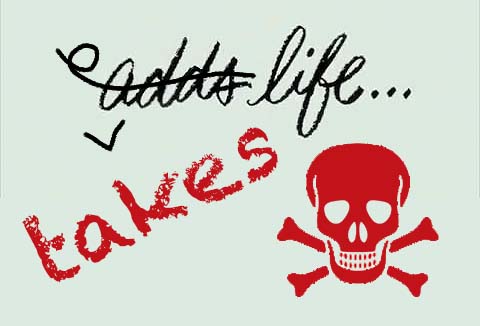

The realm of Big Alcohol just welcomed a friendly, red-and-white face. The Coca-Cola company, the second largest beverage company in the world, has been quietly rolling out a series of alcoholic beverages over the past three years, making it a sudden but formidable force in alcoholc sales. These new products—including alcoholic Simply “juice,” alcoholic Topo Chico seltzer, and a spiked Fresca soda—all take cues from the worst trends in flavored malt beverage production. All three are cross-branded with familiar, non-alcoholic products. All three hide under the veneer of “healthy” alcohol. And all three are the kinds of flavor-masked products that frequently serve as the drink of choice for youth who still dislike the taste of alcohol.
The initial entry, back in 2020, was alcoholic Topo Chico. Nominally a seltzer produced in Monterrey, Mexico, the alcoholic version keeps the brand but takes the production back into the United States. Yet the branding remains: a New York Times article called out Coca-Cola’s appeal to “perceived Mexicanness” in its promotion of the brand. While the dreary colonialism inherent in exoticizing an everyday Mexican brand is obvious, the potential to target Latinx communities may be even more threatening. Despite a history of drinking less than non-Latinx White U.S. residents, recent surges in alcohol use disorder are driven in part by a rapid increase in risky alcohol use in Latinx communities.
In the past year, Coca-Cola has branched out further. Fresca, a sugar-free soda often marketed as a “healthy” alternative to soda, is now being used to brand a cocktail-in-a-can. These kids of “ready to drink” cocktails combine often high ABV, strong flavor, and a packaging—a can—that suggests they should be consumed in one sitting. These are, for all intents and purposes, alcopops, and like alcopops, they draw more than their share of underage drinkers. And like Topo Chico, the Fresca brand is associated with health, and very specifically with being low-calorie. Unlike Topo Chico, however, Fresca has historically been targeted at women. So with alcoholic Fresca, Coca-Cola has managed to prime teen girls for both an alcohol use disorder and an eating disorder.
But why should the beverage behemoth stop with teens? Why not… juice? Among the many brands in its portfolio is Simply, a juice brand that is branded with the assertion that it is free of any additives besides juice. (This claim, while true, is deceptive, as very few juice brands currently on the market have anything other than juice, and prepackaged juice is, itself, a sugary beverage just like soda.) The same lemonade, then, that parents pour for their children will now be sold as a 24 oz. alcoholic tallboy. What a perfect procession to sear alcohol into developing minds: get them to recognize booze brands young, get them hooked when they’re teens, and keep them drinking “healthy” “seltzers” when they start to worry about mortality.
The irony is, Coca-Cola faces little risk from brand dilution. Already, sugary beverages form the backbone of its $286 billion global empire. These beverages are complicit in a wide swath of health harms, including, according to Nature, “weight gain, … type 2 diabetes mellitus, cardiovascular diseases and some cancers.” Yet Coca-Cola has been nearly immune from regulation, going so far as to join with Anheuser-Busch InBev to threaten a budget-crippling ballot measure unless California blocked soda taxes. They have the economic strength and the political ruthlessness to push these new, alcoholic products into any hand they see. Based on the rapid expansion of their product lines, these are only the tip of an iceberg. If that spurs an anxious sensation of looming threat, well, Coca-Cola themselves have long urged customers to “Taste the Feeling.”
READ MORE about the alcopop gateway to youth use.
READ MORE about the great “healthy drinking” hoax.
Published on: May 13, 2022